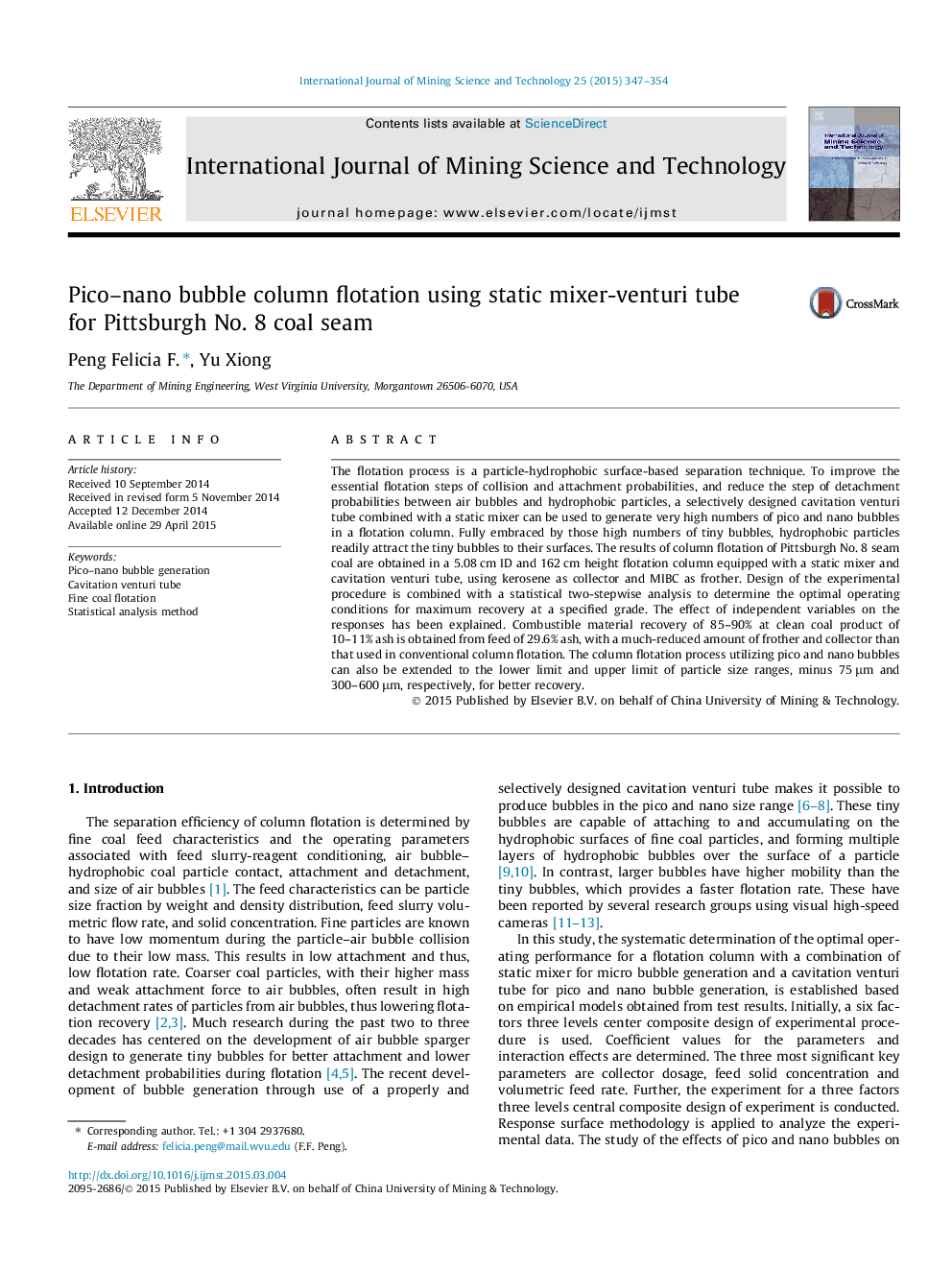| Article ID | Journal | Published Year | Pages | File Type |
|---|---|---|---|---|
| 276418 | International Journal of Mining Science and Technology | 2015 | 8 Pages |
The flotation process is a particle-hydrophobic surface-based separation technique. To improve the essential flotation steps of collision and attachment probabilities, and reduce the step of detachment probabilities between air bubbles and hydrophobic particles, a selectively designed cavitation venturi tube combined with a static mixer can be used to generate very high numbers of pico and nano bubbles in a flotation column. Fully embraced by those high numbers of tiny bubbles, hydrophobic particles readily attract the tiny bubbles to their surfaces. The results of column flotation of Pittsburgh No. 8 seam coal are obtained in a 5.08 cm ID and 162 cm height flotation column equipped with a static mixer and cavitation venturi tube, using kerosene as collector and MIBC as frother. Design of the experimental procedure is combined with a statistical two-stepwise analysis to determine the optimal operating conditions for maximum recovery at a specified grade. The effect of independent variables on the responses has been explained. Combustible material recovery of 85–90% at clean coal product of 10–11% ash is obtained from feed of 29.6% ash, with a much-reduced amount of frother and collector than that used in conventional column flotation. The column flotation process utilizing pico and nano bubbles can also be extended to the lower limit and upper limit of particle size ranges, minus 75 μm and 300–600 μm, respectively, for better recovery.
